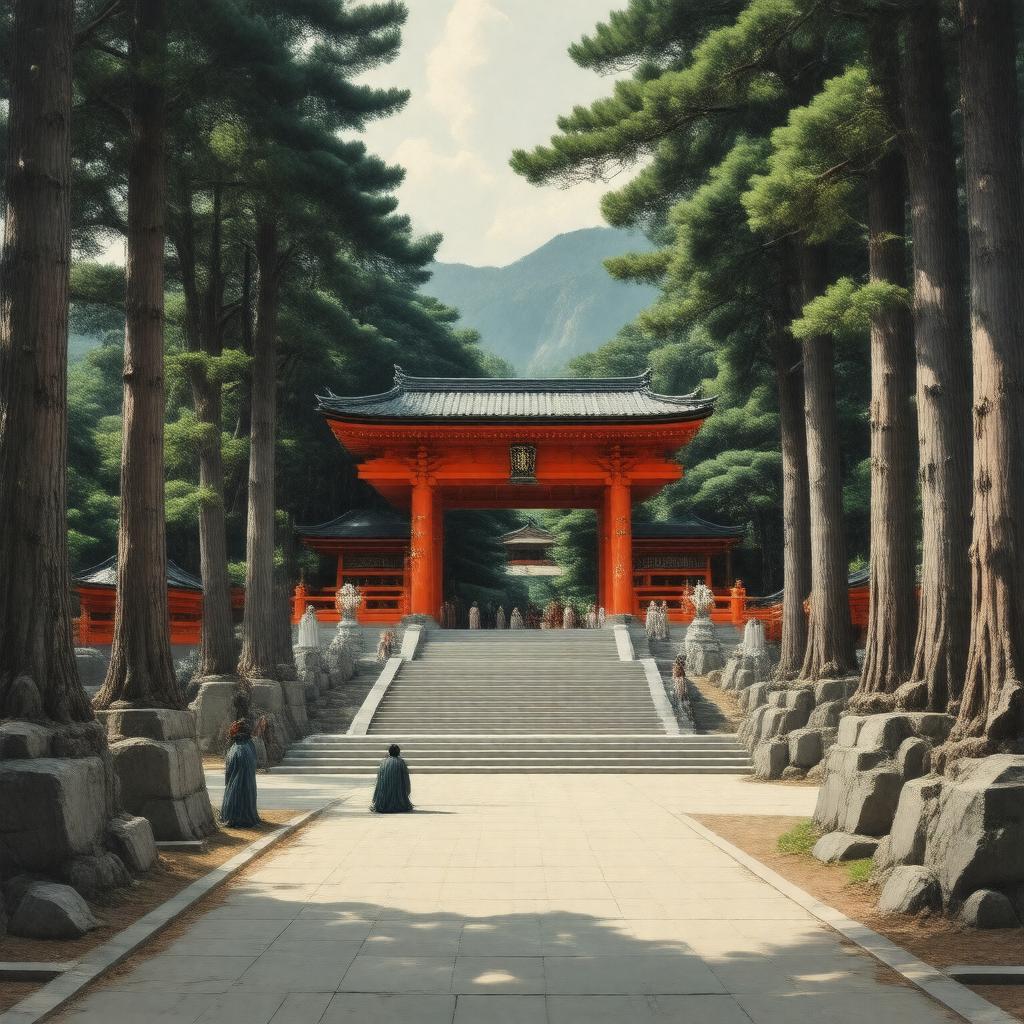Prompt
"Generate an image of a traditional Japanese landscape with a Shinto shrine in the foreground, surrounded by lush greenery and towering trees. In the background, a subtle image of the Japanese emperor or a symbol of the imperial family can be seen. The shrine's torii gate is prominently displayed, and a few worshippers can be seen performing rituals or offering prayers. The overall atmosphere should convey a sense of serenity, reverence, and national pride, reflecting the complex and multifaceted nature of State Shinto during its existence from 1868 to 1945."

